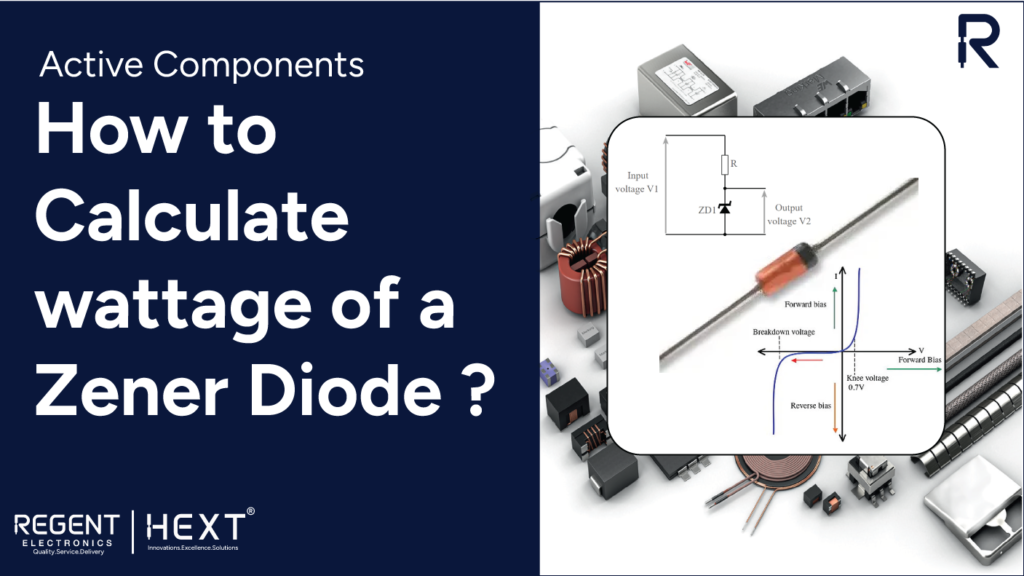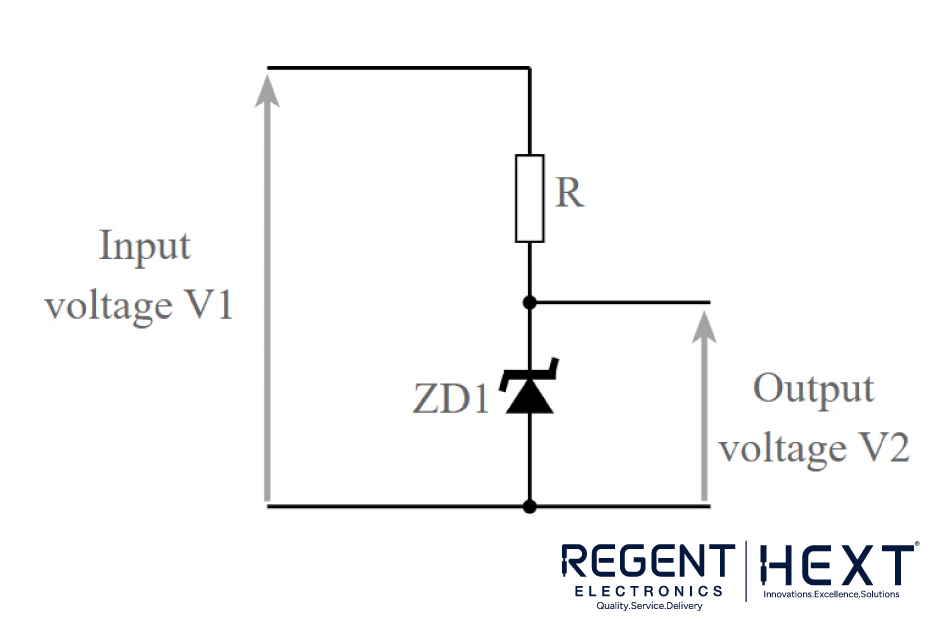
How to Calculate the Wattage of a Zener Diode: A Step-by-Step Guide
Zener diodes are commonly used in electronic circuits as voltage regulators, and understanding how to calculate the wattage of a Zener diode is essential for designing a stable and reliable circuit. If you’re unsure about how to perform the necessary calculations or need guidance on selecting the right resistor, this blog will walk you through the process. If you’re interested in learning more about diodes or other related topics, be sure to explore our website for additional resources.

What is a Zener Diode and How Does it Regulate Voltage?
Zener diodes are primarily used in voltage regulation applications. When reverse-biased, they maintain a consistent voltage across themselves by entering their breakdown region at a specific voltage—this is called the “Zener voltage.” This characteristic makes Zener diodes ideal for providing stable reference voltages in various circuits. A Zener diode in parallel with a voltage source will conduct current once the reverse voltage reaches the breakdown voltage of the diode.
Zener Diode as a Voltage Regulator

A basic Zener diode circuit is typically composed of the Zener diode itself and a series resistor. The Zener diode regulates the voltage, while the resistor limits the current flowing through the diode. Without the resistor, excessive current would flow through the diode, potentially damaging it.
To design a Zener diode voltage regulator circuit, it’s crucial to calculate the appropriate value for the series resistor based on the input voltage and the desired output voltage.
How to Calculate the Wattage of a Zener Diode: A Practical Example
Let’s walk through the calculation of the resistor value and Zener diode wattage for a regulated 5.1V output from a 12V input.
Step 1: Calculate the Voltage Difference Across the Series Resistor
First, we need to find the voltage that will drop across the series resistor.
Input Voltage (Vin): 12V
Output Voltage (Vout): 5.1V
The voltage across the series resistor (Vr) is:
Vr=Vin−Vout=12V−5.1V=6.9VVr = Vin – Vout = 12V – 5.1V = 6.9VVr=Vin−Vout=12V−5.1V=6.9V
Step 2: Determine the Resistor Value
Next, we calculate the value of the resistor (R) using Ohm’s Law. Let’s assume the current (I) should be 110mA (maximum).
R=VrI=6.9V0.11A=62.7 ΩR = \frac{Vr}{I} = \frac{6.9V}{0.11A} = 62.7 \, \OmegaR=IVr=0.11A6.9V=62.7Ω
You can choose a standard resistor value of 62Ω.
Step 3: Calculate the Resistor’s Wattage
Now, calculate the power dissipation in the resistor (Pr). This will give us the amount of heat the resistor needs to handle.
Pr=Vr×I=6.9V×0.11A=0.759WPr = Vr \times I = 6.9V \times 0.11A = 0.759WPr=Vr×I=6.9V×0.11A=0.759W
A 1W resistor will suffice for this circuit to handle the power dissipation without overheating.
Step 4: Calculate the Zener Diode Wattage
Finally, we need to calculate the power dissipation in the Zener diode (Pz). This is the power consumed by the Zener diode when regulating the voltage.
Pz=Vz×I=5.1V×0.11A=0.561WPz = Vz \times I = 5.1V \times 0.11A = 0.561WPz=Vz×I=5.1V×0.11A=0.561W
In this case, the power dissipation in the Zener diode is 561mW. For a safe margin, select a Zener diode with a higher wattage rating. For instance, the 1N4733A Zener diode, which has a power rating of 1.3W, would be a good choice for this circuit.
Conclusion: Choosing the Right Zener Diode and Resistor
By following the above steps, you can easily calculate the resistor and wattage values needed for your Zener diode circuit. This ensures your circuit operates efficiently without overloading the components.

In this example:
- Resistor Value: 62Ω, 1W
- Zener Diode Wattage: 561mW, Zener Diode Selection: 1N4733A (1.3W)
This process can be applied to different voltage requirements by adjusting the input voltage, output voltage, and current specifications. Now that you have the necessary calculations, selecting a suitable Zener diode for your circuit should be much easier.
For more details or to purchase components, visit our website to explore a range of Zener diodes and related products.
